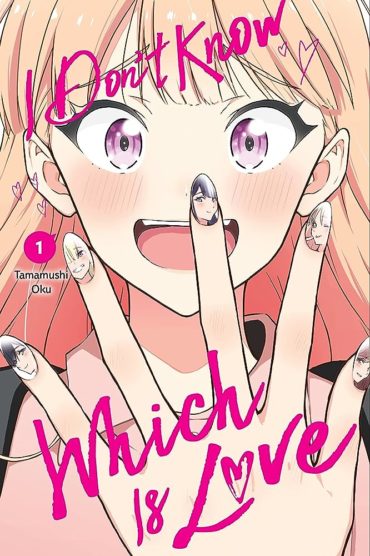I Don’t Know Which is Love Volume 1 Review
In her final days of high school, Mei Soraike finally works up the courage to confess her love for her best friend. But her words remain unsaid as the best friend confesses first that she now has a boyfriend. Heartbroken, Mei decides that when she goes to college, she will absolutely, without a doubt, get a girlfriend. She dyes her hair, and with newfound confidence she decides to go for it; but to her surprise, she’s not just got one girl interested in her, but several! How is Mei supposed to choose? And is she really falling in love, or is it just an infatuation?
Mangaka Tamamushi Oku has been writing manga since 2014, mostly of the yuri/girls love variety, but this is the first series to be translated into English. You can tell from the first volume of I Don’t Know Which is Love that the mangaka is experienced from the gorgeous art, the striking cover, and how the protagonist is very likable from the opening pages. It’s easy to feel her devastation from the best friend’s rejection, but also get swept up in her bouncing back to finding herself a girlfriend within minutes of walking into college. From her excitement over seeing boobs to her instant heart eyes over every pretty girl she meets, whilst also being aware of her flaws (such as internally scolding herself for seeing one girl just as a sex object) she is a great protagonist to follow. But her journey to finding a girlfriend, despite having a choice of them, isn’t going to be easy. At the back of the book, the mangaka says she came up with a concept of having a yuri harem, where every girl falls in love with the heroine for different reasons; for example, the art student Minato falls for Mei’s voice, whilst the shy, idol Riri likes Mei’s hands. Mei finds herself ‘falling’ for each one for different reasons but it’s also hinted that she’s struggling to know her own feelings, due to still reeling from the rejection of her best friend months earlier. So even though the opportunity for love is right at her feet, it also feels miles away and that can be a good concept for a story and a comedic way to explore how one’s mind might be saying ‘let’s go for it’ but the heart’s saying ‘not ready yet’ and exploring through the girls which one really blooms into genuine love.
However, a lot of this is overshadowed by an abundance, and I do mean an abundance, of what’s supposed to be fan service but comes across as sexual harassment. We have the roommate Kaoru who – without the protagonist’s consent – strip her off her clothes, throws them away and then sleeps with her in the bed, all because she doesn’t like the fact that Mei ‘smells weird’. Then there’s Maria, Mei’s advisor who shows no qualms about overstepping the student-teacher line, openly flirting and then later leading her to a hotel room. There’s more but I won’t spoil it all. I know harem as a genre is known for showing tons of fanservice and often characters pushing the boundaries of the (usually male) protagonist, I’ve watched a fair amount in the past and normally roll my eyes at it, dismissing it as simply ‘part of the genre’ but I think it bothered me here because not only there is SO much ALL in one go, but there’s not much breathing space between the intense sections. Not helped that, despite Mei’s eagerness at first to reciprocate the feelings, she’s also very clearly not ready for any of it, so when she blushes, looks away or outright shuts down, it makes the whole situation more uncomfortable rather than funny. I understand the importance of wanting to introduce all the potential love interests very quickly, so that the audience can choose which one they want to ‘ride or die for’ early on, but I think the rushed nature of it didn’t help matters. Out of the five beautiful ladies, only one is really the ‘non problematic’ one and she’s introduced at the very start, and the story starts tumbling down from there.
Translation is provided by Leighann Harvey, who delivers a fun, easy read with handy translation notes at the back as well. The book also opens with a few colour pages, covering the whole backstory, so that was appreciated.
I felt very conflicted about I Don’t Know Which is Love throughout the whole first volume; the art is lovely, the protagonist is instantly likeable, and there’s great potential in this story. But the heavy use of fanservice merely being unhealthy depictions of queer relationships rubbed me the wrong way. If it wasn’t so ramped and constant within the book, I would have been kinder to it, but I found myself less enthusiastic with every page turned. Let’s hope that future volumes can improve.
Our review copy from Yen Press was supplied by Diamond Book Distributors UK.


